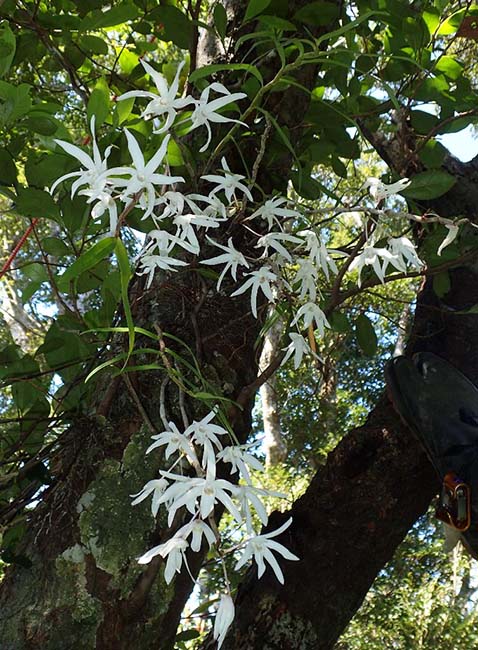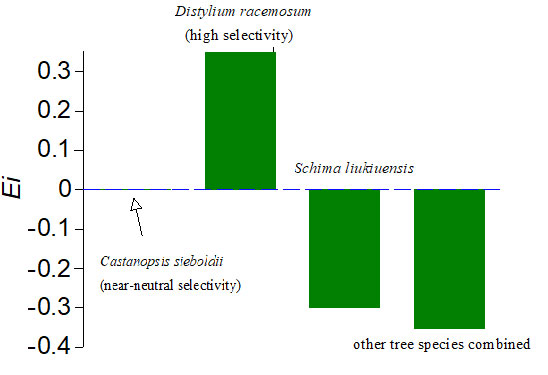Home > Research > Research Results > Research Results 2018 > A rare orchid in Yambaru looks gorgeous and lily, but is picky about where it lives
Update:September 10, 2018
Main content starts here.
A rare orchid in Yambaru looks gorgeous and lily, but is picky about where it lives
| Article title |
Host selection and distribution of Dendrobium okinawense, an endangered epiphytic orchid in Yambaru, Japan |
|---|---|
| Author (affiliation) |
ABE Shin(a), Nobuhiko Kotaka(b), Atsushi Takashima(c), Tetsuto Abe(b), Kazuhiko Saito(d),Takashi Masaki(e) (a) Department of Forest Vegetation, FFPRI, Tsukuba, Ibaraki, Japan. (c) Yona Field, Subtropical Field Science Center, Faculty of Agriculture, University of the Ryukyus, Kunigami, Japan. (d) Kansai Research Center, FFPRI, Kyoto, Japan. (e) Forestry and Forest Products Research Institute, Tsukuba, Ibaraki, Japan. |
| Publication Journal |
Ecological Research, (First Online: 15 May 2018), DOI: 10.1007/s11284-018-1618-9( External link ) |
| Content introduction |
Yambaru, which is located in the northern part of Okinawa Island in the Nansei Islands of Japan, was designated as a national park in 2016. Yambaru, along with other regions such as Amami Islands, has attracted attention as a candidate site for UNESCO World Natural Heritage, and scientific basis is strongly required for the use and conservation of its forests. Dendrobium okinawense is an epiphytic orchid endemic to Yambaru and grows only on trees. Its flowers are large and beautiful. The number of wild D. okinawense individuals has drastically decreased due to deforestation and overexploitation, thus making it an endangered species on the verge of extinction, despite the fact that it is a plant symbolizing Yambaru. In this study, we investigated a total of over 50 wild plants of D. okinawense. We found that this species grows only in aged forests that have never been clear-cut after World War II. In addition, this epiphytic species prefers large-diameter trees as hosts to live. We showed that D. okinawense particularly prefers a tree species Distylium racemosum, which is a preferred adnation host species presumably because it grows slowly and offers impregnable surface so that trees of this species can last long as stable partners for the epiphyte. Meanwhile, stands aged enough for D. racemosum trees to grow into large diameters can accommodate many animals (insects, birds, and rodents); therefore, large-diameter trees of D. racemosum can serve as an indicator of a stand that should be given a priority for conservation. This investigation is the first academic report on ecology of D. okinawense and contributes to the appropriate protection of rare species and forest management in Yambaru. This investigation was supported, in part, by the Environment Research and Technology Development Fund from the Environmental Restoration and Conservation Agency (4-1503).
Figure: Adnation host selectivity of Dendrobium okinawense The vertical axis indicates Ivlev's selectivity index. Each tree species on the horizontal axis has a positive value when the proportion of trees having epiphytes is higher than that of available standing trees, indicating that this particular tree species is a preferred adnation host. While Castanopsis sieboldii, the most dominant tree species in Yambaru, has a near-zero value, indicating near-neutral selectivity,Distylium racemosum has a large positive value,indicating high selectivity Differences between tree species were significant. |
Copyright © Forest Research and Management Organization. All rights reserved.


